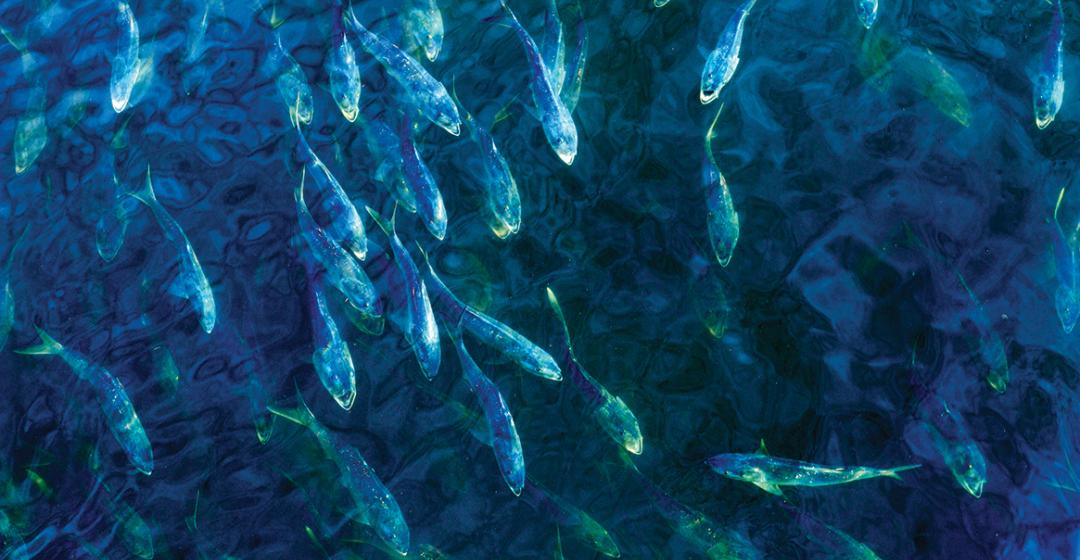Riding a rising tide, they came toward me, mouths agape, drinking in the sea’s plankton. They were once a regular part of the cycle of summer in the waters around the Vineyard and up and down the East Coast. But I hadn’t seen them in good numbers for many years – over a decade, in fact. Their great schools disappeared with scarcely a trace. No question now, though, they were here again, so close I could reach out and touch them. Each one reaffirmed their species’ existence and erased all doubt that the wait was over. Menhaden were back.
I and the countless other anglers from New Jersey to Maine were not the only mammals to have noticed their resurgence in recent years. Last summer was notable for the number of whales feasting relatively nearshore on menhaden. They were seen not just by boaters behind Noman’s Land or out toward the Hooter bell south of Wasque Point, but even from the beaches of Katama and the South Shore.
Atlantic white-sided dolphins undoubtedly took note too. It’s always been a thrill to see the playful species cavorting in Vineyard Sound, either from a small boat or on glass-flat mornings from the Menemsha jetties or Great Rock Bight. But in the past few summers, dolphin sightings no longer seemed a reason to immediately phone everyone and ask, “Guess what I saw today at sea?” Menhaden had returned. The dolphins who regularly hound them naturally followed suit.
A member of the herring family, the Atlantic menhaden (Brevoortia tyrannus) is a vital forage fish – that is to say, a fish near the base of the food chain on which many other species feed. With a forked tail, silvery sides, and a distinctive black spot high behind their gill plate, they often gather in enormous schools at the surface, making them easy to see and identify. Also called bunker, mossbunker, fatback, or pogie, they typically reach fifteen inches in length and a weight of one pound. They have an average life span of around eight years.
Much like oysters, menhaden are “filter feeders.” Employing the gill rakers that line their throats, they sieve the ocean’s plankton out of the water, converting it into a rich, oily flesh that is hungrily sought after by a league of predators, including whales, sharks, dolphins, bluefin tuna, swordfish, porpoise, striped bass, bluefish, weakfish, and birds. In this way, menhaden are an essential cog in nature’s grand scheme – a living bridge across which the biological richness of the smallest life in the sea feeds the largest. They may be, as author H. Bruce Franklin, who taught at Stanford, Yale, and Johns Hopkins Universities, put it in the title to his book on the species, The Most Important Fish in the Sea (Island Press, 2007).
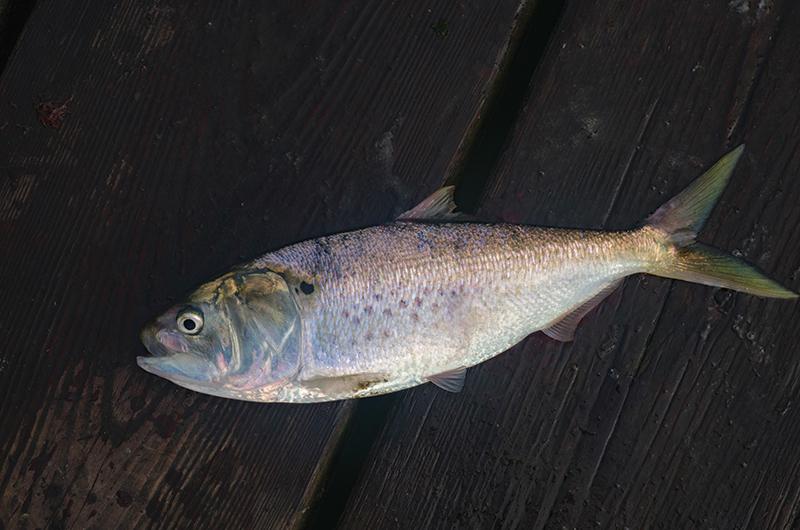
The role that menhaden play in the well-being of Island waters is clear in the timing of their annual north-south migration along the coast. During the dark winter months, adult menhaden reside well offshore, frequently in the Carolinas. As the days lengthen, they begin to roam along the Atlantic coast, many of them migrating northward toward New England, some reaching as far as the Bay of Fundy up in Canada.
Their seasonal journey coincides with that of many predators, thereby ensuring the food chain endures. Spring menhaden typically arrive to the waters around the Island in May and June, and can be found in schools large and small from Vineyard Sound to Cape Pogue, feeding the recent arrival of striped bass and bluefish. Osprey also benefit, their breeding success greatly enhanced by menhaden in their diet. Meanwhile, off our southern shores, the menhaden’s moveable feast is greedily set upon by pelagic fish and whales whose migration into our water is in full swing by June.
As the longer days of summer arrive, some early menhaden schools may continue north. But in our waters, their offspring drift into salt ponds and estuaries. Known as “peanut bunker,” by late August these young-of-year menhaden have grown to silver-dollar size, supplying forage for harbor blues, school bass, and seagulls.
As the heat of summer subsides and water temperatures cool, these bite-size menhaden are forced to leave our backwaters, exiting to the open coast often by mid-September. There they remain into October and early November, igniting the autumn blitzes of stripers, bluefish, Atlantic bonito, and false albacore that help drive the Island’s famous fall fishing derby.
With winter in the wings, the adult menhaden that had ventured farther north also again descend the coast southward. To see how their late-season presence can affect the fishing, one need only remember the most epic angling event the Island has ever seen: the legendary Columbus Day blitz of 1981. Two schools of adult menhaden traveling the south side of Martha’s Vineyard collided with two schools of striped bass, resulting in the finest day of striper fishing ever encountered on the Island. More than one hundred bass from forty to fifty-plus pounds were caught in the wild melee.
But that was a long time ago, back when one could land a forty- to fifty-pound striper. Back when menhaden were plentiful. Over the decades, their numbers declined. And then, some fifteen years ago, they all but disappeared.
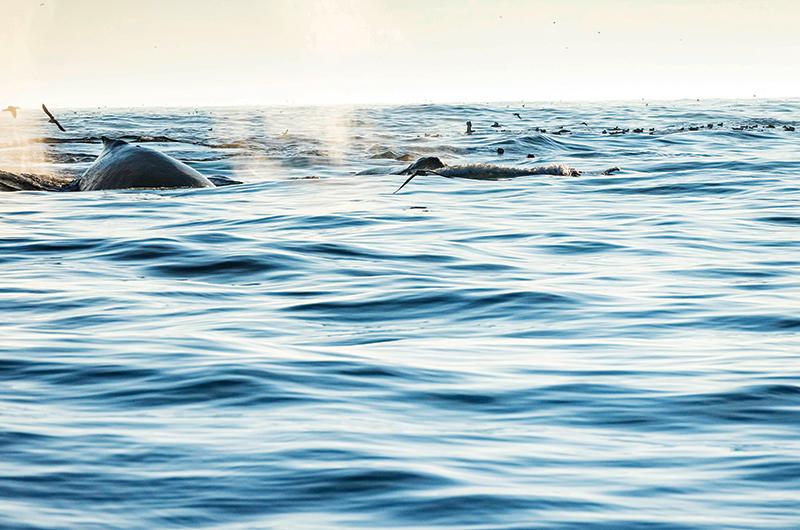
Menhaden spawning has always been variable, with boom-and-bust years that have contributed at times to a decrease in their numbers. The central problem that led to their decline and prolonged absence, however, was not their reproductive success. It was commercial exploitation. To fully appreciate how that happened, we begin by peering over our shoulders, well into the colonial past.
Back then, Indigenous Americans and colonial ancestors used menhaden as fertilizer and as a key ingredient in the production of lamp oil. The harvest, facilitated by shore nets and occasionally assisted by rowboats, was modest. It likely had little effect on the overall health of the menhaden population. The advent of steam power in the 1800s changed that.
Throughout the next century, the pursuit of menhaden was marked by increasing mechanization and commercialization. In 1922, for example, a small number of steamboats in Massachusetts Bay netted more than 1,500,000 pounds of menhaden in a matter of weeks. It was an impressive catch at the time, but the harvesting of menhaden was just in its infancy. Thirty years later, steam gave way to large diesel-powered trawlers. Assisted by spotter planes pinpointing the menhaden’s exact position, trawlers quickly encircled the fish with purse nets upward of 1,500 feet long. Trawlers’ pumps then sucked the menhaden right out of the sea and onto the decks.
Given this highly tuned, large-scale operation, by the 1970s and ’80s commercial landings along the Atlantic blew through the roof, averaging 300,000 to 400,000 metric tons – or a staggering 660,000,000 to 880,000,000 pounds of menhaden – each year. It was akin to the Wild West.
Although for many years the menhaden harvest seemed to be almost entirely without rules, that changed ever so slightly in1981. Back then, the Atlantic States Marine Fisheries Commission (ASMFC), which was created in the 1940s as a coast-wide fishing regulatory body to oversee the harvest of migratory fish, wrote their first management plan for menhaden. Unfortunately, the plan had no real teeth. Understaffed, underfunded, and often overwhelmed, the ASMFC proved unable to rope in menhaden landings. Then and for many years forward, some felt the ASMFC and the commercial industry were in cahoots.
Regardless of whether that is accurate, there is no denying that it wasn’t until 2012 that the ASMFC stepped up to the plate and made a substantive change in the way menhaden could be exploited by establishing the first coast-wide total allowable catch (TAC) on the species.
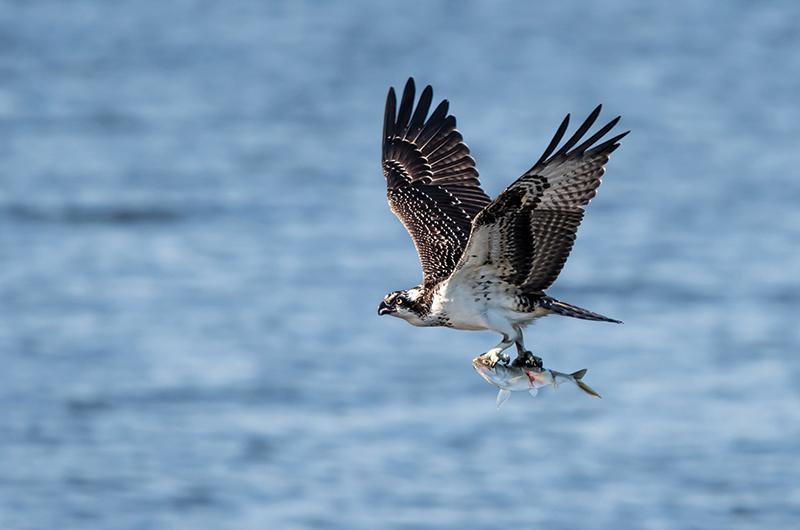
Presently, the TAC is some 515 million pounds, which is notably below the bad old days, but certainly not a trivial number. If the average menhaden that was landed weighed three quarters of a pound, that would equal nearly 687 million fish yearly. It’s a hard number to visualize: put nose to tail, that many average-sized menhaden would encircle the earth nearly five times.
The impact of the new regulations was mostly felt by one company. Roughly 75 percent of the commercial menhaden fishing is done by Virginia-based Omega Protein, a subsidiary of Cooke Inc. based in New Brunswick, Canada. Easily the largest single commercial harvest on the Atlantic coast, Omega Protein’s gear has, at times, annually removed upwards of 80 percent of the menhaden population that were two years and older.
This harvest is referred to as the “reduction fishery,” since the menhaden are not used whole, but rather ground and cooked down into a wide variety of products, including chicken feed, swine feed, pet food, fish oil, salad dressing, Omega 3 supplements, shortening, and lipstick. They are also exported overseas to feed foreign fish farms.
The other 25 percent of the commercial take is considered the “bait fishery” – menhaden are caught in gill nets to be used as bait in blue crab and lobster traps, or they are sold as whole or cut bait to recreational fishermen.
Besides having a devastating effect on menhaden populations, the large-scale commercial reduction fishery created another intractable problem – one that persists despite the overall progress of recovery. Modern menhaden trawlers teamed with spotter planes are so effective that they can rapidly remove nearly all the menhaden from an area, causing what is called a “localized depletion.” One day your home waters are rich in menhaden, then suddenly they vanish.
It’s an extremely frustrating situation for recreational anglers and charter captains who rely on the presence of menhaden to attract the likes of striped bass and bluefish. When the menhaden are gone, these fish are likely to move on.
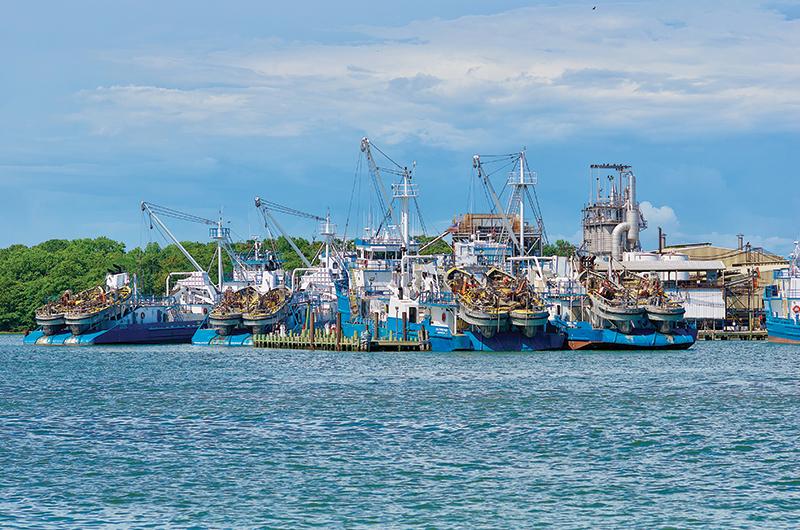
It also raises an allied concern. When the trawlers leave with the menhaden, what do the remaining local predator fish feed upon?
Resource managers have sometimes argued that striped bass and other fish are opportunistic, meaning they can easily find other prey. But this assumes that alternative forage of the same quality and quantity are available. Right now, three other large, local prey – alewives, blueback herring, and Atlantic herring – are considered overfished or threatened. As for the common small forage fish, such as sand eels and silversides, no state collects hard numbers on these populations, so no one really knows in any given year how many are out there.
All of this raises the gnawing question: can we expect the present rebound in menhaden to continue?
Early efforts to control the harvest of menhaden failed in large part because they grew out of the long-held notion in this country that natural resources were inextinguishable. Even after that proved to be false, managers spent decades attempting to maximize the potential commercial value of menhaden while overlooking the species’ indispensable role as a food source for other fish and mammals. In simplistic terms, money ruled. The menhaden harvest was extremely profitable, affording the industry’s spokespersons considerable sway in the making of regulations at the ASMFC.
While there is no firm guarantee that times have truly changed, there is a whiff of optimism in the wind. Under what is called Amendment 3 to their Interstate Fishery Management Plan (FMP), the ASMFC has made significant changes in how they manage menhaden. The most notable for the health of oceans is the introduction of a radically new approach to fisheries management.
Beginning with menhaden, the ASMFC is experimenting with moving away from managing species in isolation, without regard for their connection to other marine life. This new tool, called ecological reference points (ERP), reverses that policy. The menhaden FMP harvest now takes into account how many menhaden must be left available for the survival needs of marine predators.
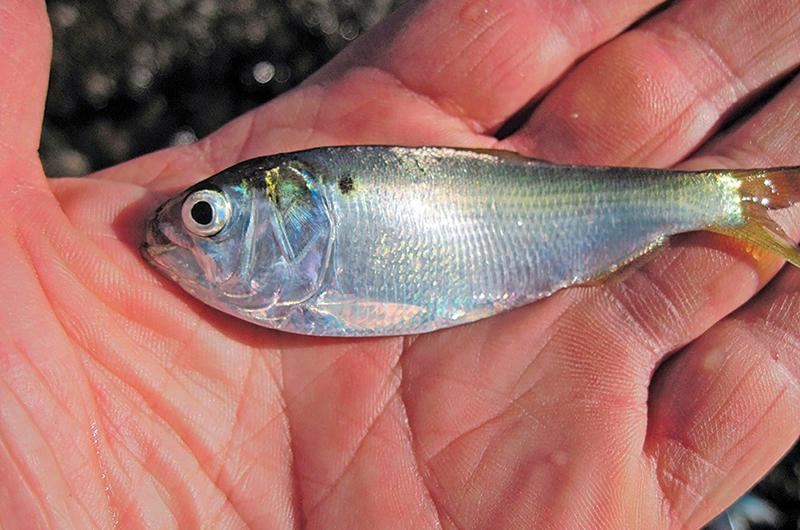
“When setting fishery quotas, Amendment 3 takes into account the role of menhaden as forage for other species, primarily striped bass at this time,” said Micah Dean, senior marine fisheries biologist for the Massachusetts Division of Marine Fisheries and member of the ASMFC’s Atlantic Menhaden Technical Committee. “In other words, we are now managing the menhaden fishery for the productivity of the striped bass population, in addition to the sustainability of human harvest.”
At present, the menhaden ERP is focused only on striped bass, for a couple of reasons. One: it is considered the species most sensitive to menhaden abundance. Two: it is the predator species on which the ASMFC has the most data. But striped bass are only a start. In the future, the ERP is aiming to better address the menhaden requirements of other predators, such as bluefish and weakfish. Also in the future, said Dean, is the possibility of including ERPs in the management of other species, notably herring.
“I think the current fisheries management plan for Atlantic menhaden is appropriate and is constraining fishery removals to a sustainable level,” he said. “The current FMP specifies an annual coast-wide fishing quota to ensure that the spawning stock is not depleted too much, whereas in previous decades there were no such constraints on coast-wide fishery removals. By limiting harvest, the plan permits menhaden to live longer, thereby increasing their presence in Massachusetts’s waters.”
That’s good news for bass and bluefish, as well as anglers and other marine mammals.

